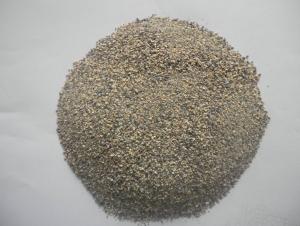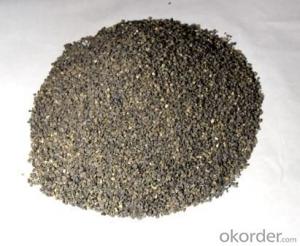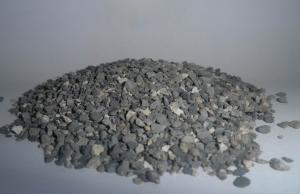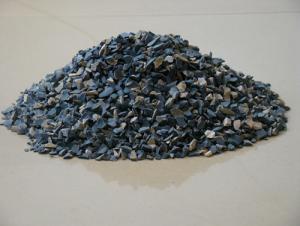Raw Materials for Refractory:Main Features of Calcined Bauxite Popular in USA
- Loading Port:
- Tianjin
- Payment Terms:
- TT OR LC
- Min Order Qty:
- 2000 m.t.
- Supply Capability:
- 10000000 m.t./month
OKorder Service Pledge
OKorder Financial Service
You Might Also Like
1.Structure of Calcined Bauxite Description
Bauxite (aluminous soil; Bauxite) is also called the alumina or bauxite, main ingredients are alumina, hydrated alumina containing impurities, is an earthy mineral. White or gray, brown and yellow or light red by iron.
2.Main Features of the Calcined Bauxite
Calcined bauxite is one of the principal ore of aluminum. Calcined bauxite contains hydrous aluminum oxides and aluminum
hydroxides, formed through the laterization of aluminous rocks in tropical and subtropical areas .Calcined bauxite is obtained by calcining (heating)superior grade bauxite at high temperature (from 85OC to 1600C) .This removes moisture there. By increasing the alumina content,compared to an alumina content of about 57%to 58% in raw bauxite, calcined bauxite has an alumina content of 84%to88%.The heating is carried out in rotary kilns.
3. Calcined Bauxite Images


4. Calcined Bauxite Specification
ROTARY KILN BAUXITE
Al2O3 | Fe2O3 | SiO2 | TiO2 | K2O+Na2O | CaO+MgO | B.D (g/ccm) |
min | max | max | max | max | max | min |
88% | 1.8% | 6.5% | 4% | 0.25% | 0.5% | 3.25 |
87% | 2.0% | 7.0% | 4% | 0.25% | 0.5% | 3.15 |
86% | 2.0% | 7.0% | 4% | 0.25% | 0.5% | 3.15/3.10 |
85-80% | 2.0% | 10.0% | 4% | 0.30% | 0.5% | 3.10 |
ROUND KILN BAUXITE
Al2O3 | Fe2O3 | SiO2 | TiO2 | K2O+Na2O | CaO+MgO | B.D (g/ccm) |
min | max | max | max | max | max | min |
88% | 2.0% | 6.5% | 4% | 0.25% | 0.5% | 3.30 |
87% | 2.0% | 6.5% | 4% | 0.25% | 0.5% | 3.25 |
86% | 2.0% | 7.0% | 4% | 0.25% | 0.5% | 3.20 |
85% | 2.5% | 8.0% | 4% | 0.25% | 0.5% | 3.10/3.15 |
5.FAQ of Calcined Bauxite
1). Q: Are you a factory or trading company?
A: We are a factory.
2). Q: Where is your factory located? How can I visit there?
A: Our factory is located in ShanXi, HeNan, China. You are warmly welcomed to visit us!
3). Q: How can I get some samples?
A: Please connect me for samples
4). Q: Can the price be cheaper?
A: Of course, you will be offered a good discount for big amount.
- Q: What brands are the best in the A-level refractory materials?
- A-level refractory materials: Dulux, Nippon, Carpoly, Skshu and Smoz. Fireproof boards are the most common materials in the market. There are two are commonly used: one is HPL decorative plastic laminates with advantages of fire- ,moisture-, wearproof and oil resistance as well as easy to wash, besides it has a great variety of colors and types. Another one is glass fiber magnesite fireproof board, the out layer of which is decorative materials while the inner layer is mineral magnesium fireproof materials which can resist a high temperature of 1,500 Celsius degree but it is not a good ornament.
- Q: How much modulus is used as refractories material of sodium silicate.
- Storage and use are very convenient, especially for mechanized and the evenly refractory material and the sodium silicatemodulus is generally...2. transportation. The appearance of product is pure white. Instant powdered sodium silicate, also known as instant sodium metasilicate.4 to 3, in powder form, automation. in the range of 3, hydrated sodium silicate
- Q: Which brand of thermal insulating refractory is good?
- The most famous is the dragon, Morgan, Luyang, which are good at making ordinary thermal insulation materials and whose products are cheap but quality. Refractories are non-metallic materials with good resistance against thermal shock and chemical erosion, low heat conductivity coefficient and expansion coefficient. It requires high temperature resistance in nature. It is difficult to transport suc materials in silicious thermal insulation board production base. Silicious thermal insulation board is a kind of thermal insulation material during casting process. Raw materials are non-porous refractory?aggregate, porous refractory?aggregate, organic fiber and inorganic fiber.
- Q: What characteristics do A grade external wall fireproofing material have?
- 1. Save space and reduce costs; 2. Fireproofing, green and environmental protection; 3. Waterproofing; 4. Sound insulation; 5. Thermal insulation; 6. Install easily and shorten the construction period; 7. High safety performance.
- Q: How to hang the suspended brick in the refractory masonry?
- First you can weld the metal fastener of the suspended brick and then hang up the brick.
- Q: What is the most reasonable drying heating curve of magnesia refractories? Products of less than 0.5T
- o
- Q: What's the frequently used refractory material?
- What's the frequently used refractory material in the market? It is usually classified into four categories: Common Refractory: silica?brick, semi-silica brick, refractory fireclay block, high alumina refractory brick, magnesia brick, etc. Unshaped Refractory: repairing?mass, ramming refractory, refractory castable, plastic refractory, refractory mortar, gun-mix refractory, sling refractory, refractory coating, lightweight refractory?castables, stemming, etc. Special Refractory: AZS brick, corundum brick, direct-bonded?magnesia-chrome?bricks, carborundum brick, silicon nitride bonded silicon carbide brick, nonoxide refractories like nitride, silicide, sulfide, boride and carbide, and oxide refractories like calcium oxide, chromium hemitrioxide, alumina, magnesium oxide and beryllia, etc. Fireclay Insulating Refractory: diatomite product, asbestos product, insulation?board, etc.
- Q: How long is the fire-resistant time of fireproof wooden door?
- National standards define the fireproof door as class A, class B, class C, among which fire-resistant time of class A fireproof door should not be less than 1.5 hours, class B should not be less than 1 hour and Class C should not be less than 0.5 hours.
- Q: What is the particle size of boron carbide for refractories?
- 0.3-0.5% is OK, but also with other additives, such as aluminum powder, silicon powder, magnesium alloy powder and so on. To achieve good results.
Send your message to us
Raw Materials for Refractory:Main Features of Calcined Bauxite Popular in USA
- Loading Port:
- Tianjin
- Payment Terms:
- TT OR LC
- Min Order Qty:
- 2000 m.t.
- Supply Capability:
- 10000000 m.t./month
OKorder Service Pledge
OKorder Financial Service
Similar products
Hot products
Hot Searches
Related keywords































